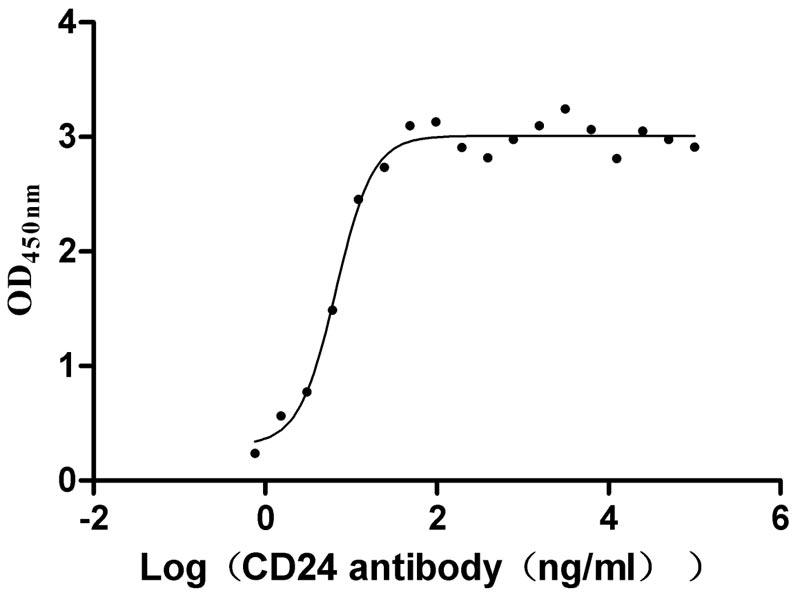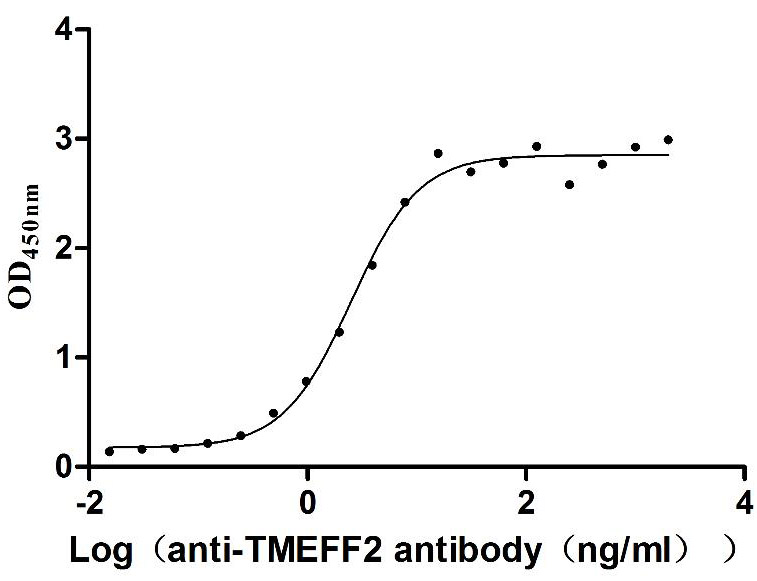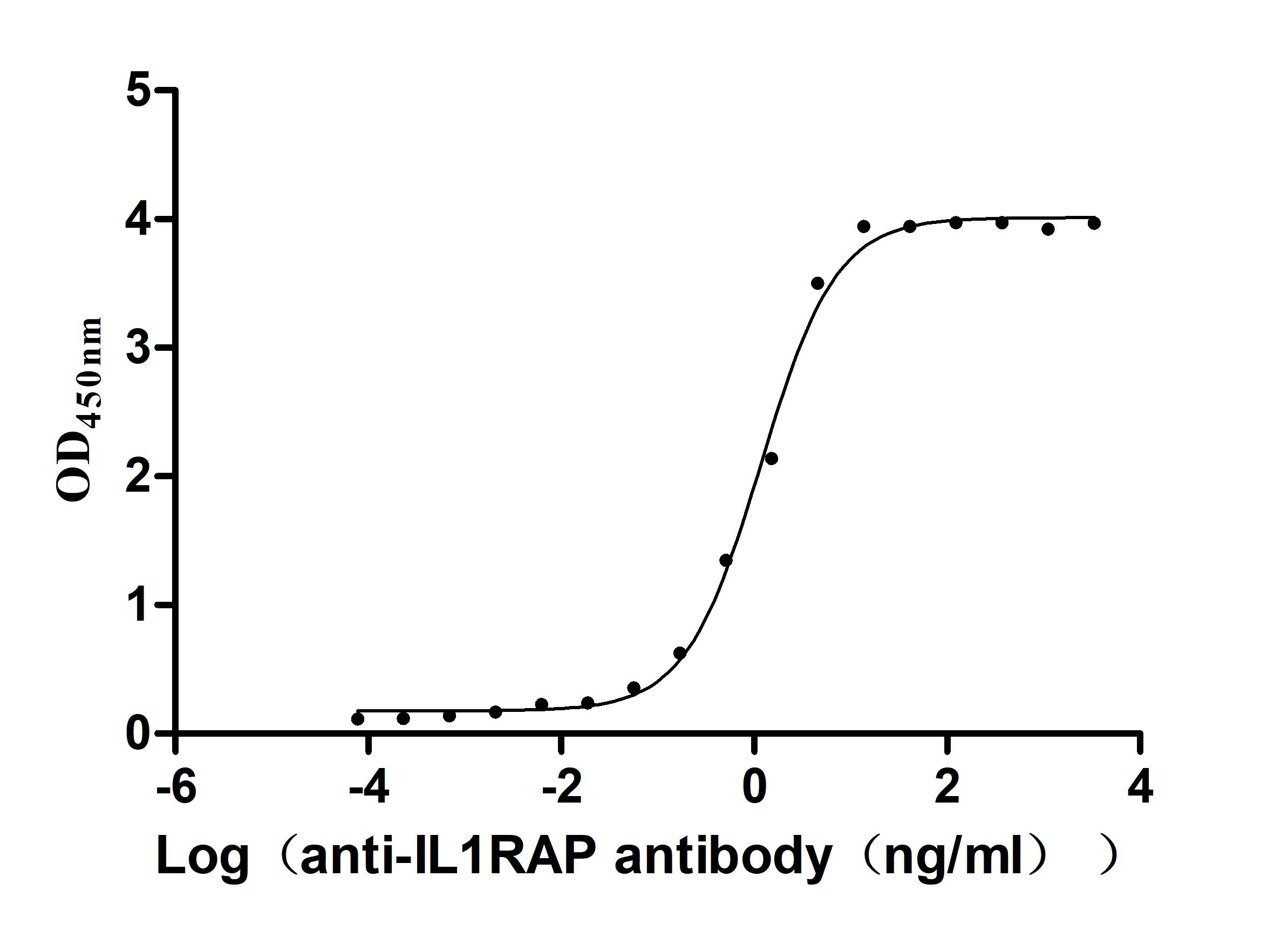Recombinant Saccharomyces cerevisiae DNA mismatch repair protein MSH3 (MSH3), partial
-
中文名稱:釀酒酵母MSH3重組蛋白
-
貨號:CSB-YP015029SVG
-
規(guī)格:
-
來源:Yeast
-
其他:
-
中文名稱:釀酒酵母MSH3重組蛋白
-
貨號:CSB-EP015029SVG
-
規(guī)格:
-
來源:E.coli
-
其他:
-
中文名稱:釀酒酵母MSH3重組蛋白
-
貨號:CSB-EP015029SVG-B
-
規(guī)格:
-
來源:E.coli
-
共軛:Avi-tag Biotinylated
E. coli biotin ligase (BirA) is highly specific in covalently attaching biotin to the 15 amino acid AviTag peptide. This recombinant protein was biotinylated in vivo by AviTag-BirA technology, which method is BriA catalyzes amide linkage between the biotin and the specific lysine of the AviTag.
-
其他:
-
中文名稱:釀酒酵母MSH3重組蛋白
-
貨號:CSB-BP015029SVG
-
規(guī)格:
-
來源:Baculovirus
-
其他:
-
中文名稱:釀酒酵母MSH3重組蛋白
-
貨號:CSB-MP015029SVG
-
規(guī)格:
-
來源:Mammalian cell
-
其他:
產(chǎn)品詳情
-
純度:>85% (SDS-PAGE)
-
基因名:
-
Uniprot No.:
-
別名:MSH3; YCR092C; YCR1152; YCR92C; DNA mismatch repair protein MSH3; Mismatch-binding protein; MBP; MutS protein homolog 3
-
種屬:Saccharomyces cerevisiae (strain ATCC 204508 / S288c) (Baker's yeast)
-
蛋白長度:Partial
-
蛋白標(biāo)簽:Tag?type?will?be?determined?during?the?manufacturing?process.
The tag type will be determined during production process. If you have specified tag type, please tell us and we will develop the specified tag preferentially. -
產(chǎn)品提供形式:Lyophilized powder
Note: We will preferentially ship the format that we have in stock, however, if you have any special requirement for the format, please remark your requirement when placing the order, we will prepare according to your demand. -
復(fù)溶:We recommend that this vial be briefly centrifuged prior to opening to bring the contents to the bottom. Please reconstitute protein in deionized sterile water to a concentration of 0.1-1.0 mg/mL.We recommend to add 5-50% of glycerol (final concentration) and aliquot for long-term storage at -20℃/-80℃. Our default final concentration of glycerol is 50%. Customers could use it as reference.
-
儲存條件:Store at -20°C/-80°C upon receipt, aliquoting is necessary for mutiple use. Avoid repeated freeze-thaw cycles.
-
保質(zhì)期:The shelf life is related to many factors, storage state, buffer ingredients, storage temperature and the stability of the protein itself.
Generally, the shelf life of liquid form is 6 months at -20°C/-80°C. The shelf life of lyophilized form is 12 months at -20°C/-80°C. -
貨期:Delivery time may differ from different purchasing way or location, please kindly consult your local distributors for specific delivery time.Note: All of our proteins are default shipped with normal blue ice packs, if you request to ship with dry ice, please communicate with us in advance and extra fees will be charged.
-
注意事項:Repeated freezing and thawing is not recommended. Store working aliquots at 4°C for up to one week.
-
Datasheet :Please contact us to get it.
靶點詳情
-
功能:Component of the post-replicative DNA mismatch repair system (MMR). Heterodimerizes with MSH2 to form MutS beta, which binds to DNA mismatches thereby initiating DNA repair. MSH3 provides substrate-binding and substrate specificity to the complex. When bound, the MutS beta heterodimer bends the DNA helix and shields approximately 20 base pairs. Acts mainly to repair insertion-deletion loops (IDLs) from 2 to 13 nucleotides in size, but can also repair base-base and single insertion-deletion mismatches that occur during replication. After mismatch binding, forms a ternary complex with either the MutL alpha or MutL beta heterodimer, which is thought to be responsible for directing the downstream MMR events, including strand discrimination, excision, and resynthesis. MutS beta also has a role in regulation of heteroduplex formation during mitotic and meiotic recombination. MutS beta binds to DNA flap structures predicted to form during recombination, and is required for 3' non-homologous tail removal (NHTR). MutS beta-binding alters the DNA conformation of its substrate at the ds/ssDNA junction and may facilitate its recognition and/or cleavage by the downstream nucleotide excision repair (NER) RAD1-RAD10 endonuclease. ATP binding and hydrolysis play a pivotal role in MMR and NHTR.
-
基因功能參考文獻:
- Msh2-Msh3 hops over nucleosomes and other protein roadblocks, but maintains sufficient contact with DNA to recognize a single lesion. PMID: 26837705
- Trinucleotide Repeat (TNR) tracts were stabilized in the msh3Delta background, indicating that Msh2-Msh3 plays important role in shifting expansion-contraction equilibrium toward expansion in early stages of TNR tract expansion. PMID: 25969461
- Data suggest that bot hATP and structure-specific repair substrates cooperate to direct Msh2-Msh3-mediated repair and provide an explanation for the msh3Y942A separation-of-function phenotype. PMID: 24746922
- a comparative study of Msh2-Msh3 and Msh2-Msh6 for mispair binding, sliding clamp formation, and Mlh1-Pms1 recruitment PMID: 24550389
- Mlh1-Mlh3, a meiotic crossover and DNA mismatch repair factor, is a Msh2-Msh3-stimulated endonuclease. PMID: 24403070
- Authors identified a set of aromatic residues within the FLY motif of the predicted Msh3 nucleotide binding pocket that are essential for Msh2-Msh3-mediated mismatch repair but are largely dispensable for 3' non-homologous tail removal. PMID: 23458407
- Msh2-Msh3 directly interferes with normal Okazaki fragment processing by flap endonuclease1 (Rad27) and DNA ligase I (Cdc9) in the presence of TNR sequences, thereby producing small, incremental expansion events PMID: 22938864
- Data suggest that recognition of small insertion/deletion mispairs by Msh3, but not Msh2, requires more interaction with DNA conformations induced by small insertion/deletion mispairs than induced by large that are bent and strand separated. PMID: 20421420
- MSH2-MSH3 binding to its substrates creates a unique nucleoprotein structure that may signal downstream steps in repair that include interactions with mismatch repair (MMR) and nucleotide excision repair factors. PMID: 16781730
- The binding of MSH2-MSH3 to mismatch DNA involves protein-DNA contacts that appear very different from those required for MSH2-MSH6 mismatch binding. PMID: 17157869
- Msh3-like behaviors beyond mispair specificity are not features controlled by the mispair-binding domain PMID: 17573527
- MSH3 acts in repair of base pair mismatch. PMID: 17636021
顯示更多
收起更多
-
亞細胞定位:Nucleus.
-
蛋白家族:DNA mismatch repair MutS family, MSH3 subfamily
-
數(shù)據(jù)庫鏈接:
KEGG: sce:YCR092C
STRING: 4932.YCR092C
Most popular with customers
-
Recombinant Human Signal transducer CD24 (CD24)-Nanoparticle (Active)
Express system: Mammalian cell
Species: Homo sapiens (Human)
-
Recombinant Human Tomoregulin-2 (TMEFF2), partial (Active)
Express system: Mammalian cell
Species: Homo sapiens (Human)
-
Recombinant Human Killer cell immunoglobulin-like receptor 3DL2 (KIR3DL2), partial (Active)
Express system: Mammalian cell
Species: Homo sapiens (Human)
-
Recombinant Human Interleukin-1 receptor accessory protein (IL1RAP), partial (Active)
Express system: Mammalian cell
Species: Homo sapiens (Human)















